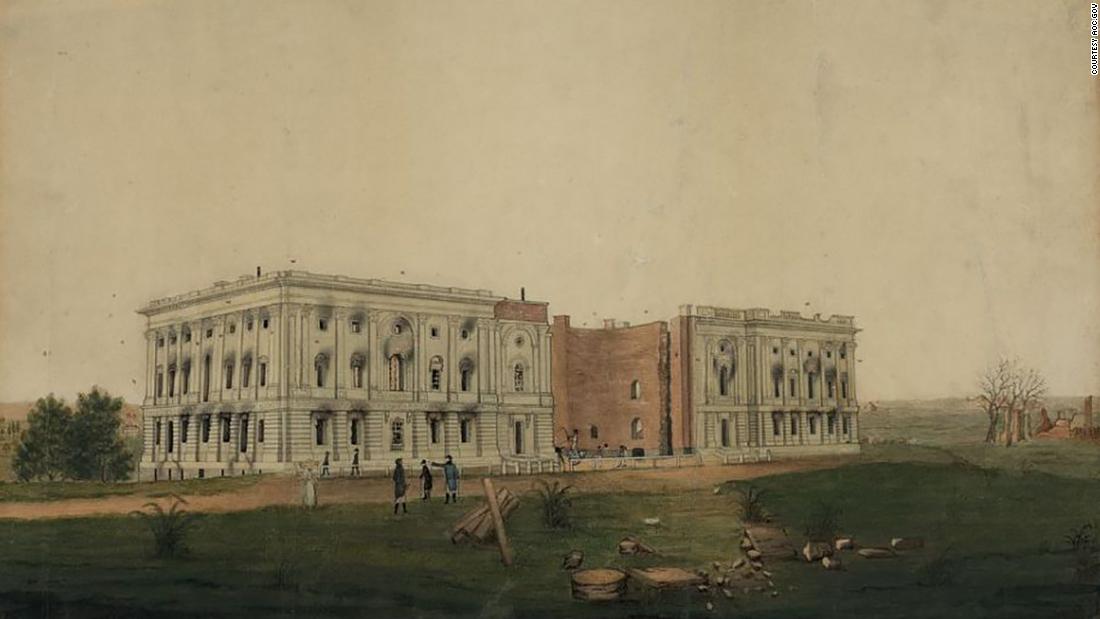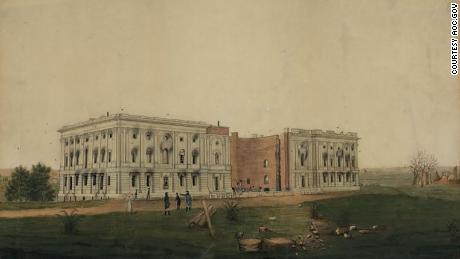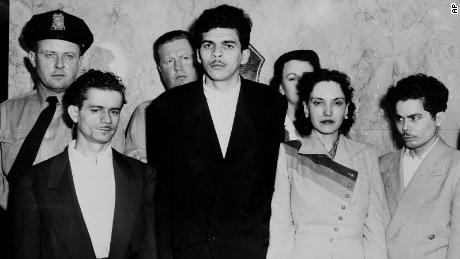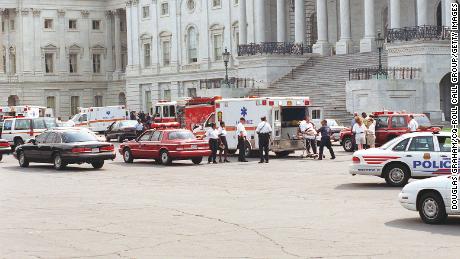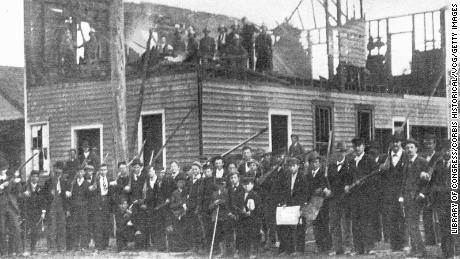There have been other attacks at the US Capitol before this week
Until Wednesday, the Capitol has seen attacks three other times — in 1814, 1954 and 1998.
Here’s a look at those incidents.
The attack was in retaliation for Americans’ burning of the Canadian capital, York, in April 1813. British troops met little to no resistance during the raid, according to the Capitol architect website.
Most of the population of the city at the time fled, the website says, but “those who remained … were witness to a horrifying spectacle.”
“The British torched major rooms in the Capitol, which then housed the Library of Congress, as well as the House, Senate and Supreme Court,” the website states. “The White House, the navy yard and several American warships were also burned.”
The Capitol was still under construction at the time, and most of the damage to parts of the wings was severe. Fortunately, the building was not destroyed, the website says.
“The exterior structure survived and many of the interior spaces remained intact,” the website says.
Nationalists attack Capitol in 1954
Puerto Rican nationalists smuggled guns into the Capitol and opened fire in 1954, said Samuel Holliday, director of scholarship and operations with the US Capitol Historical Society.
The shooting took place on March 1, 1954, as representatives gathered on the House floor for an upcoming vote, according to the House’s history and archives website. Three men and one woman — all members of the Puerto Rican Nationalist Party — traveled from New York City to Washington to take their seats in the visitor’s gallery above the chamber.
The foursome then opened fire and displayed the Puerto Rican flag. Five congressmen were injured in the shooting, the website says.
The violent act of protest was meant to draw attention to their demand for Puerto Rico’s independence, the website says. It had been annexed by the US in 1898.
Two Capitol police officers shot in 1998
A gunman with a history of mental illness stormed past a security checkpoint, killing Officer Jacob J. Chestnut Jr. in the process, the website says.
As shots rang out, the gunman ran toward a door that led to the suites of then-Majority Whip Tom DeLay of Texas. Detective John M. Gibson told aides to seek cover while he and the gunman exchanged gunfire. Gibson was fatally wounded during the shootout, but gave other officers the chance to take down the gunman. A tourist was also injured.
Days after the shooting, the House and Senate approved a resolution for a memorial service for the officers in the Capitol Rotunda.
Only successful coup d’etat in 1898
There’s been one successful coup in the nation’s history, but that was a local insurrection in a North Carolina city, not the nation’s capital.
This led to America’s only successful coup d’etat on November 10, 1898, when a group of armed White men attacked and killed Black citizens throughout the city. The mob was led by a group of powerful community leaders known as the Secret Nine, according to the library’s online guide about the coup.
“The events of the 1898 coup marked a turning point in the post-Reconstruction South that changed the trajectory of race relations in North Carolina and marked the start of Jim Crow laws in the state, which further enforced racial segregation through the mid-20th century,” the website states.
CNN’s Ted Barrett, Manu Raju and Peter Nickeas contributed to this report.
![]()


